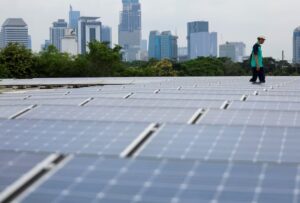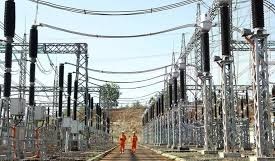KUALA LUMPUR, Malaysia — The Association of Southeast Asian Nations (ASEAN), representing one of the world’s most dynamic and rapidly industrializing regions, has officially endorsed a sweeping new action plan designed to significantly accelerate its transition toward sustainable energy sources. Announced following a crucial meeting of energy ministers, the 2026–2030 ASEAN Plan of Action for Energy Cooperation (APAEC) sets out ambitious, mandatory targets for renewable energy integration and efficiency gains over the next five years.
This move underscores the bloc’s increasing commitment to mitigating climate change risks while simultaneously ensuring energy security and fostering sustainable economic growth across its ten member states. With Malaysia currently holding the ASEAN chairmanship, the consensus reached marks a critical political and strategic milestone for regional climate policy.

Elevating Renewable Capacity: The Headline Targets
The newly endorsed action plan establishes two primary, headline-grabbing targets focused on substantially increasing the role of renewable energy (RE) within the region’s energy mix. These goals represent a significant step up from the achievements and targets set under the previous 2016-2025 framework.
1. Power Generation Capacity
The plan mandates a major shift in the electricity sector: ASEAN aims to increase the share of renewable electricity to 45% of total installed power generation capacity by 2030.
This target recognizes the essential role of RE sources—such as solar, wind, geothermal, and hydropower—in decarbonizing the power grid, which is often the largest single emitter of greenhouse gases in rapidly developing economies. Achieving a 45% share of renewables in total capacity implies a massive, coordinated regional push for investment in large-scale renewable infrastructure, as well as decentralized, distributed generation systems.
2. Primary Energy Supply
The second key target addresses the broader energy landscape, aiming to increase the share of renewables in ASEAN’s total primary energy supply (TPES) to 30% over the 2026-2030 period.
TPES is a comprehensive metric that includes energy used across all sectors—transport, industry, residential, and power generation. Pushing the RE share to 30% signifies that renewable sources are expected to replace a significant portion of fossil fuels (coal, oil, and natural gas) in areas beyond just electricity generation, potentially through the adoption of biofuels, sustainable biomass, and green hydrogen initiatives.
The Imperative of Energy Efficiency
Alongside the drive for cleaner energy sources, the APAEC 2026-2030 plan places a strong emphasis on boosting energy efficiency—a cost-effective and immediate strategy for reducing consumption and carbon emissions.
The new efficiency goal is to cut the region’s energy intensity by 40% from the 2005 level.
Energy intensity is a crucial economic metric, defined as the amount of energy consumed per unit of economic output (Gross Domestic Product, or GDP). A reduction in energy intensity means that the ASEAN economy can continue to grow robustly while consuming less energy to produce that growth. Achieving a 40% reduction signals a commitment to structural improvements in industrial processes, building codes, transportation systems, and overall energy management practices across the bloc.
Contextualizing the Leap: Benchmarking Against the Previous Plan
To fully appreciate the ambition of the new plan, it is vital to contextualize the targets against the goals set under the preceding 2016–2025 APAEC.
Target Metric
2016-2025 Target (by 2025)
2026-2030 Target (by 2030)
Increase in Ambition
RE in Total Primary Energy Supply
23%
30%
7 percentage points
RE in Power Generation Capacity
35%
45%
10 percentage points
Energy Intensity Reduction (from 2005 level)
32%
40%
8 percentage points
The data clearly illustrates a sharp increase in the level of commitment across all three key performance indicators. The new targets are not merely incremental adjustments but represent a deliberate political and economic decision to accelerate the energy transition in the face of escalating global climate pressure. Moving the renewable share in power capacity from 35% to 45% in the five-year period between 2025 and 2030, in particular, will require significant regulatory reforms and streamlined investment procedures in national energy markets.

Implementation Challenges and Regional Cooperation
While the endorsement of the plan is a success, the primary challenges now lie in the implementation phase. The diverse economic structures, regulatory environments, and energy resource endowments of ASEAN’s member states necessitate a flexible yet coordinated approach.
Successful implementation will require intensive regional cooperation on several fronts:
-
Grid Interconnectivity: Developing and strengthening the ASEAN Power Grid (APG) is essential. A more interconnected grid allows member states to efficiently trade renewable electricity, balancing the intermittency of solar and wind power across borders and leveraging the region’s diverse resources (e.g., Indonesia’s geothermal, Vietnam’s wind, and Laos’ hydropower).
Financing Mobilization: The billions of dollars required for this transition will demand innovative financial instruments, robust public-private partnerships, and access to international climate finance.
Policy Harmonization: Member states must work towards harmonizing energy standards, regulations, and incentives to create a stable, attractive investment environment for large-scale renewable energy projects.
The Malaysian Ministry of Energy Transition and Water Transformation, which oversees the bloc’s current chairmanship, will play a critical role in steering these cooperative efforts and ensuring national commitments translate into tangible regional progress. The new APAEC 2026-2030 is set to be the definitive roadmap for ASEAN’s energy future, positioning the region as a significant global player in the ongoing shift towards a net-zero energy system.





